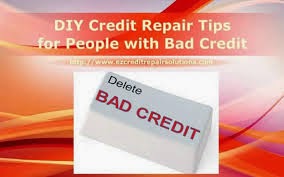While many people believe that getting their bad credit repaired can only be done through a professional agency, this is simply not true. By going to a credit agency, you might find that it takes a great deal more time and money than if you just worked on it yourself. Before you get in touch with a professional credit repair service, refer to the steps listed below, and you might find that repairing your own credit is not that difficult at all.
When you repair your own credit, you must understand that it is a lengthy process that requires patience. The first thing you need to do is contact credit reporting agencies in writing, and request a copy of your credit report. Federal Law states that everyone gets a free credit report annually. You can locate the three main credit-reporting agencies that you will need to get in touch with by performing an Internet search using the terms “Credit Reporting Agencies”. You might also consult your local phone directory.
Contact the agency in writing, and include the following information in your request:
1. Request a free copy of your credit report.
2. A copy of your state identification (such as your driver’s license)
3. Copy of proof of your current address (such as a utilities bill showing your home address)
4. Provide your previous addresses for the past 5 years.
5. A copy of your social security card.
6. Make sure you close the request with your signature.
Your credit report should take approximately 4-6 weeks to be generated and sent to you. If you receive a letter denying you credit, make a copy and enclose it with your written request for a copy of your credit report. If you have already received your free annual credit report permitted the free yearly report, you can use a denial letter of credit within 60 days of its receipt.
When you receive your reports from the agencies you contacted, look over each report for accuracy and discrepancies. Create a log in order to track the differences. If you find invalid accounts or errors in your reports, do not hesitate to file disputes. If you need to file a dispute, most agencies provide the forms to do so via their website. Each credit report should provide contact and account information for each creditor. Keep a log of all your debt information and creditors. Most debts older than 7 years old probably won’t appear on the report, and if so, leave them alone. Most creditors after 7 years will write off the debt, though some might continue to pursue you. Whatever the case, don’t open the Pandora’s box if the account isn’t listed on your credit report.
The next step is to contact each creditor to make payment arrangements. Most of them will be willing to work with you, while some might not be so agreeable. If a creditor is being difficult, feel free to ask for his or her supervisor or speak with someone else. Expect some creditors to be rude and unwilling to work with you. Try no to feel discouraged, be persistent, and ask to speak with someone else. Offer a settlement amount. Keep a written log of the conversation, including the person’s contact information each time you speak with a creditor.
It can take as many as 6 months to feel like you are making headway on your credit repair, but rest assured that your credit will get better within a year or two.
It is very important that while you are paying off your debts that you pay by check or money order and retain all receipts. Make sure that you request a receipt for the payment from the agency.
Continue to obtain copies of your credit reports annually from each agency. Do not create new debts while paying off your current ones. If you receive credit offers, throw them away. Remain focused on your goal to get out of debt and document your payments, contact with the creditors, their names, extension, time and date you spoke with them and list any pertinent detail regarding your conversations.


No comments:
Post a Comment